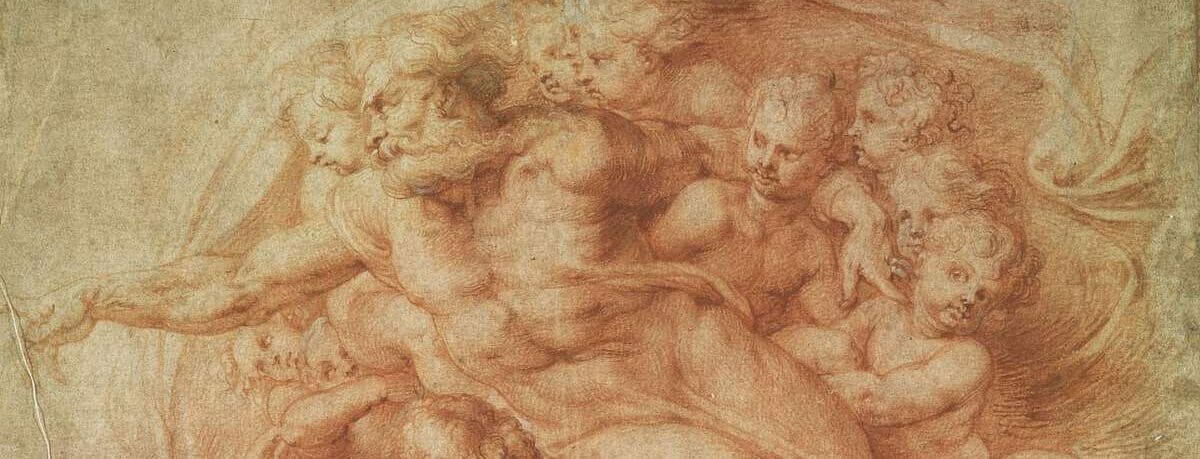
Loki and Sigyn | Norse gods through different timelines
Artist
Year
Country
Material
Dimensions
Mårten Eskil Winge (1825-1896) was a 19th century Swedish painter. He was born in Stockholm and studied at the Royal Swedish Academy of Fine Arts after completing his studies as an student at the Uppsala Cathedral School in 1846. He became interested in the Norse sagas during his studies and painted several works dealing with this theme. In 1856, he became a pupil of the Swedish painter Johan Christoffer Boklund and later travelled from Düsseldorf to Paris. There Winge studied with the French history painter and teacher Thomas Couture and had the opportunity to visit the Louvre. Here, Winge copied The Three Kings in Bethlehem by Peter Paul Rubens. He returned to Sweden in 1863, where he became a member of the Academy of Arts and a professor. There he opened a painting school in his studio.
By including scenes from Norse mythology in his works, the artist helped to make it known in Sweden. Winge produced legendary and mythological Norse paintings around the 1860s, including Thor’s Fight with the Giants (1872) and Loki and Sigyn (1863), both of which are preserved in the Nationalmuseum in Stockholm.

The work Loki and Sigyn is an oil painting on canvas depicting the scene in which Loki receives punishment for his evil deeds. In this scene, Loki is naked, bound to a rock with the entrails of his son Narfi, conceived with the goddess Sigyn, with a serpent dripping its venom on his face. In the work, Sigyn wears a red robe, and she is draped in white cloth with a long veil covering her head. Legends say that Loki will remain in this terrible condition until Ragnarok, where he will fight in the final battle against the other gods.
Loki, the god of Mischief
Loki is a central figure in Norse mythology and is one of the most complex and ambiguous deities in this pantheon. He is known as the god of mischief, deception, and ingenuity.
Loki is related to several Norse gods, but his genealogy is complex due to his origins. In fact, he is the son of the giants Fàrbauti and Laufey but was adopted by Odin. For this reason, Loki is considered the half-brother of Thor, the god of thunder, and Baldr, a Norse deity often associated with the sun.
Thus, Loki is not considered one of the Aesir (main deities of Norse mythology) but rather a giant or a being of ambiguous origin. However, he is often considered an ally of the gods and part of their stories, as he often helps them out of difficult situations through cunning. He is known for his ability to transform himself into different forms. This allows him to deceive and confuse other gods or creatures. In some stories, he takes female or animal shape.
While this can help the other gods with his tricks and cunning, it can also cause problems and discord among them. Loki is famous for his ambiguous and often conflicting actions. These include the plan devised by Loki to cause the death of Baldr, who was one of the most beloved gods.
The prophecy of the end of the world, Ragnarok
Together with the giantess Angrboða, Loki generated the three famous monsters: the wolf Fenrir, the serpent Jormungandr and the hag Hel, who rules the world of the dead. These three beings together play an important role in the Norse eschatology, the prophecy of the end of the world, known as Ragnarok.
Ragnarok is a term in Norse mythology that refers to a cosmic event. This predicts the decline of the gods and the destruction of the world. Norse legends pass on this concept through sources such as the Poetic Edda and the Prose Edda, important texts in Norse mythology and literature.
In Ragnarok, believers expect a series of catastrophic events to occur. These include the release of the wolf Fenrir, the challenge between the god Thor and the giant serpent Jormungandr, the fall of the main gods such as Odin and Thor, and the destruction of the world through a great conflict. After this event, the world is to be reborn, with a new generation of gods and a new beginning for the surviving humanity.
The concept of Ragnarok has often inspired Pop Culture, influencing literature, movies, Comics, video games, and other Media.
Visualizza questo post su Instagram
Sigyn, an example of love, fidelity and sacrifice
Sigyn is a figure in Norse mythology primarily associated with the god Loki; in fact, she was his wife and together they had two sons, Narfi and Vali.
One of the best-known stories related to Sigyn concerns her role during the myth of Loki’s punishment. He was taken to a cave and bound to a rock with the entrails of his son Narfi, who was killed by his brother Vali. On him was a poisonous snake, whose venom dripped on him. The god, because of the pain, shuddered so loudly that the earth shook. Sigyn stood beside Loki to hold a bowl under the snake so as to collect the poison to relieve her husband’s pain. However, from time to time he had to move away to empty the bowl, and then the venom dripped onto Loki, causing him terrible suffering.
Sigyn’s story is often seen as an example of marital fidelity and sacrifice, for despite the suffering inflicted on her husband, she remained by his side doing her best to ease his pain.
The comics variant of the Norse god
Loki first appeared as a comic book character in Venus no. 6 published by Timely Comics, now Marvel Comics, in August 1949 as a member of the Olympian gods exiled to the Underworld. His appearance was different from that of the current Loki. His image was reminiscent of the traditional Devil, with fiery red hair and a fuchsia suit. What gave this character popularity was the horror comic series Journey into Mystery where Loki was the main character from volume no. 622 to no. 645. Other solo series were then dedicated to this character, including Loki: Agent of Asgard (2013), Vote Loki (2016), and Loki (2019).
Giving a face on the small and big screens to the Norse God in the Marvel Cinematic Universe is actor Tom Hiddleston, among them the TV series Loki conceived by Michael Waldron for Disney+. The first season of this series, which premiered in June 2021, consists of 6 episodes in which Loki collaborates with the Time Variance Authority organisation to correct the timeline and stop a greater threat. Loki thus ends up hunting Sylvie (Sophia Di Martino), a female variant of himself, across different timelines.
The opening theme song of this series has a special feature, it fully captures one of the main characteristics of the god of deception, in fact she is also a shape-shifter!
Loki 2, the end of the wait, the second season is here!
Kevin Wright, executive producer of the series, revealed that playing a significant role in the storyline will be Jonathan Majors, who will play Victor Timely, a variant of Kang the Conqueror. Victor Timely was introduced in the post-credit scene of Ant-Man and the Wasp: Quantumania. In the final scene of the first season, Sylvie stabbed He Who Remains, a variant of Kang, causing chaos in the universe. The Loki creative team is excited to include Timely in the storyline, promising an important role for the character.
Visualizza questo post su Instagram
The figure of Loki has thus been the subject of diverse and fascinating interpretations throughout history. The complexity of this character is often associated with human ambiguity and fickleness. The story of the Norse God depicted by Winge in the 19th century is now available with his MCU-produced variant on Disney +, and the god of deception is back. In what timeline will his new adventures take place?
Tag
Buy a ☕ for Hypercritic









